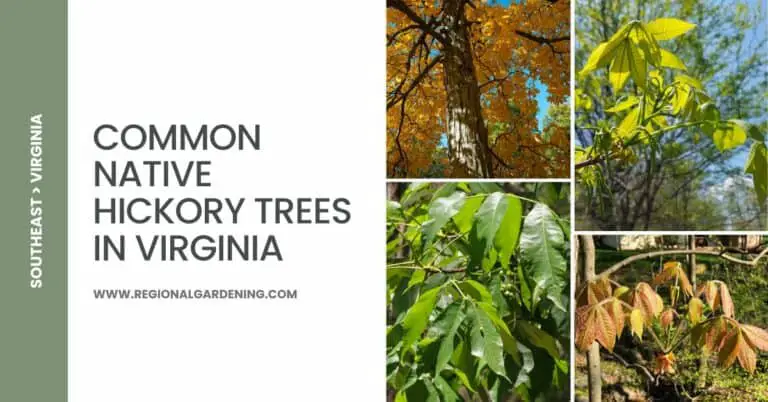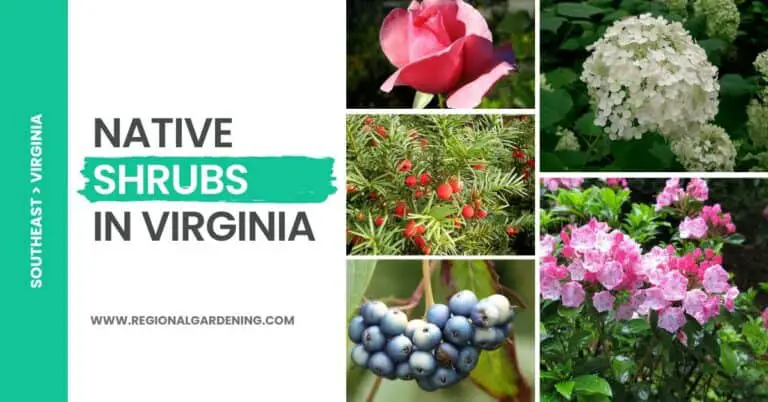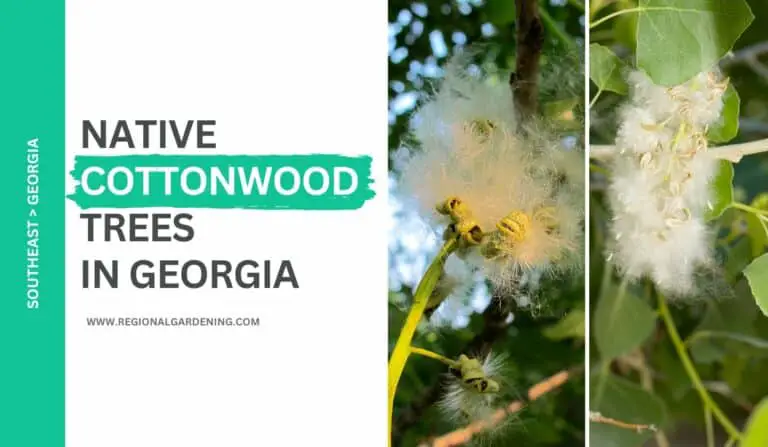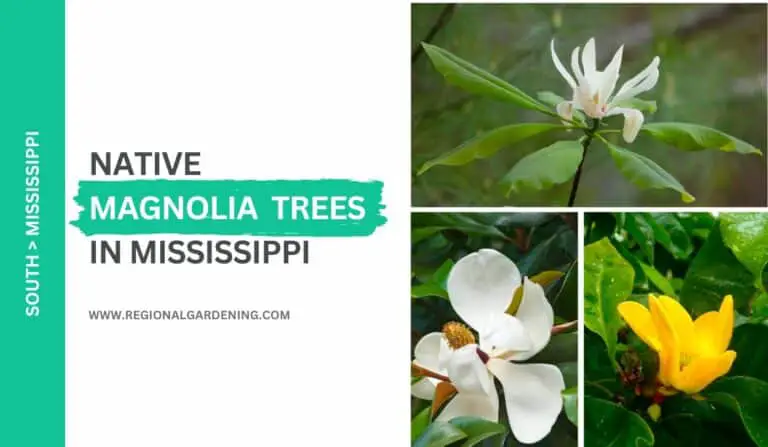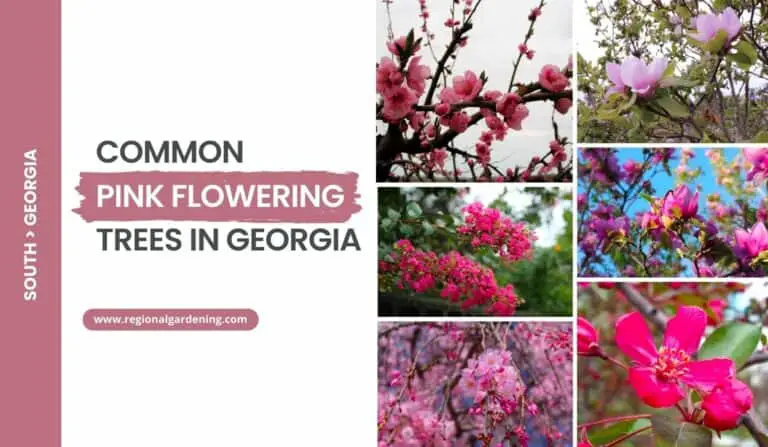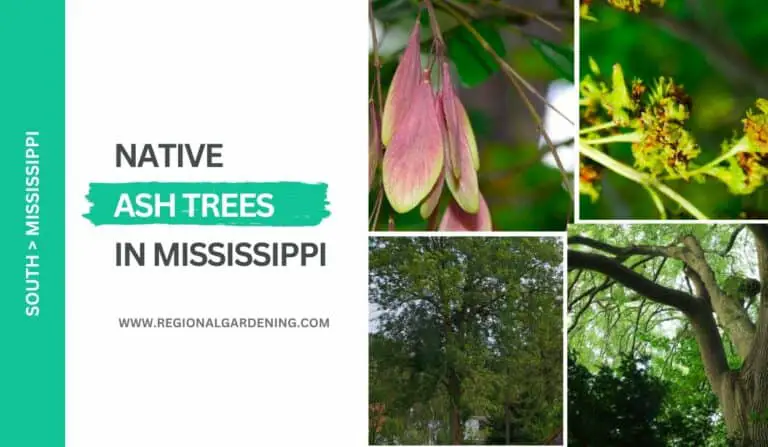3 Common Cypress Trees In Georgia (Photos & ID Guide)
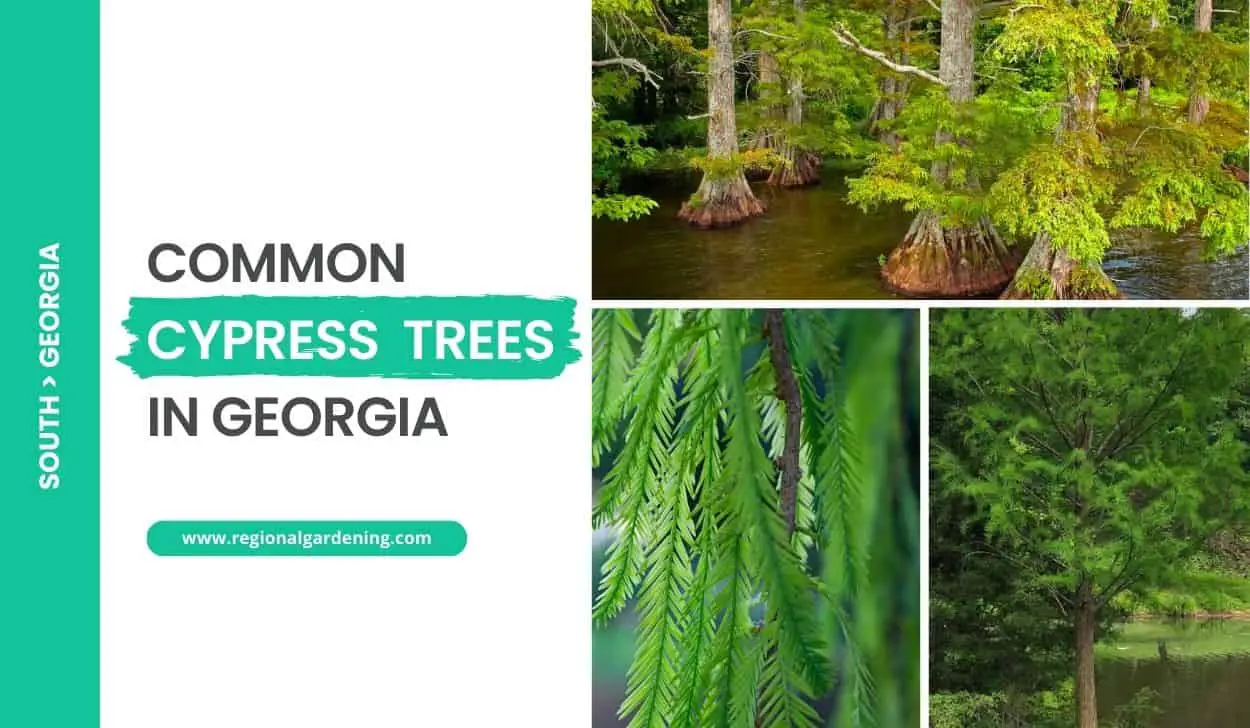
The presence of numerous cypress trees, each with its own distinct charm and ecological significance, graces Georgia’s rich and diverse ecosystem. In this article, we will explore the three most common cypress trees in Georgia through this captivating photo and identification guide.
This article is your key to unlocking the secrets of Georgia’s cypress-lined landscapes, from the iconic Bald Cypress, with its majestic, buttressed roots that seem to defy gravity, to the delicate Pond Cypress, which thrives in serene wetland habitats, and the intriguing Montezuma Cypress, a relatively rare but captivating find.
So, let us get started.
1. Bald Cypress
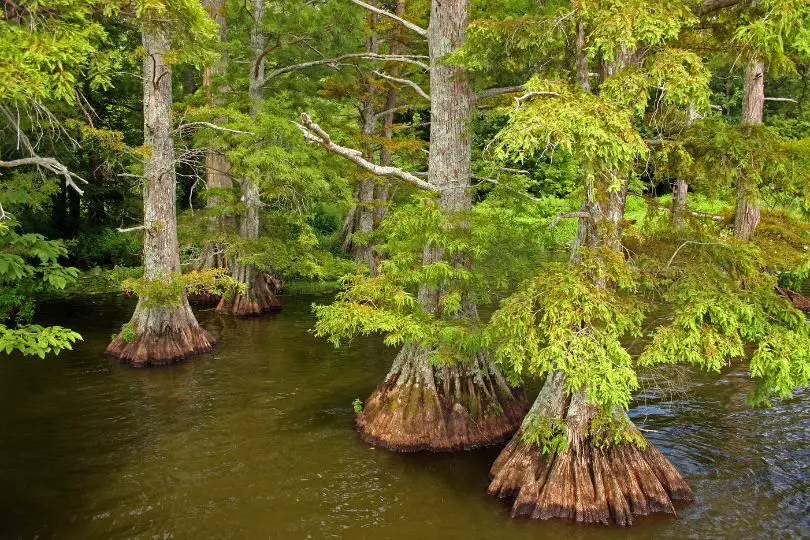
- Scientific Name: Taxodium distichum
- Common Name(s): Bald Cypress, Southern Cypress
- Mature Height: 50-70 feet (15-21 meters)
- Native Region: Southeastern United States, including Georgia
- Flowers: No Flowers
- Fruit: Small woody cones
- Uses: Ornamental tree, erosion control, lumber, timber, wildlife habitat
Taxodium distichum, also known as the Bald Cypress, is a widespread plant in Georgia settings. It is a deciduous coniferous tree in the cypress family. The tree has a characteristic pyramidal shape and can reach a mature height of 50-70 feet (15-21 meters).
The tree is easily recognizable by its fluffy, light green leaves, which become a lovely rusty orange or reddish-brown before dropping in the fall. Bald Cypress bark is thick, reddish-brown, and deeply furrowed, lending the tree its distinct appearance.
The Bald Cypress is native to the southeastern United States, including Georgia, and flourishes in wetland habitats such as swamps, floodplains, and riverbanks. It thrives in regions with poor drainage and can withstand flooding for extended periods. It is quite versatile and can live in arid upland environments.
The Bald Cypress does not have beautiful flowers, but it does have little woody cones that carry its seeds. These cones may remain on the tree for the entire year.
Because of its appealing form, fall color, and capacity to grow in moist locations, the Bald Cypress is frequently utilized as an ornamental tree in Georgia settings. Its dense foliage offers both privacy and shade. It is also renowned for its sturdy and long-lasting wood, which is used for building, furniture, and decking. Furthermore, the tree has great erosion management, making it a popular choice for landscaping near bodies of water. The Bald Cypress is an important component of wildlife habitats, providing nesting sites and food sources for a variety of bird and animal species.
2. Pond Cypress
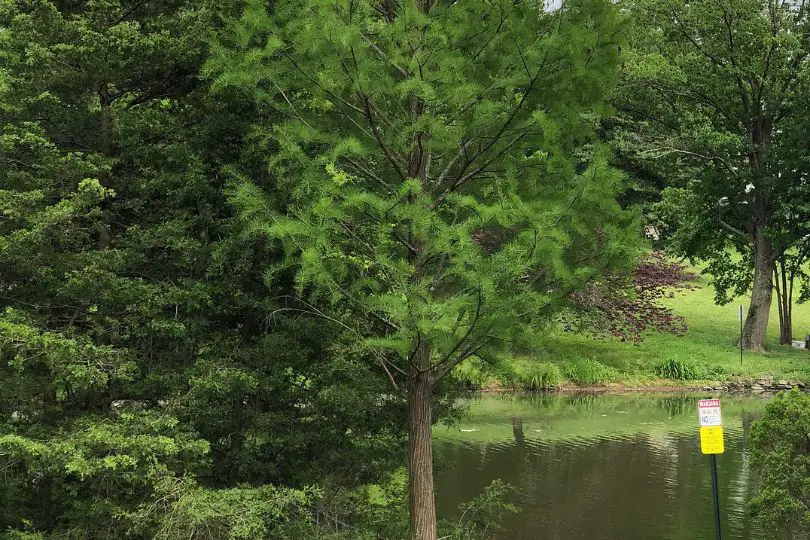
- Scientific Name: Taxodium ascendens
- Common Name(s): Pond Cypress
- Mature Height: 50-70 feet (15-21 meters)
- Native Region: Southeastern United States
- Flowers: No flowers
- Fruit: Small cones
- Uses: Pond Cypress trees are often used for erosion control, as windbreaks, and for ornamental purposes in landscapes. The wood is also highly valued for its durability and is commonly used in construction.
Taxodium ascendens, popularly known as Pond Cypress, is a deciduous conifer tree native to the southeastern United States. It matures to 50-70 feet (15-21 meters) in height and has a pyramidal shape with drooping branches. Pond Cypress leaves are needle-like and grouped in spirals along the branches. Before falling, the leaves turn a gorgeous orange-brown tint.
The Pond Cypress’s growth in wetland settings, particularly swamps and ponds, is one of its distinctive characteristics. The tree can grow on damp soils and is tolerant of periodic flooding. It is widely found in Georgia’s low-lying places, such as the Okefenokee Swamp.
Although it does not have beautiful flowers, the Pond Cypress does have little cones that appear on the branches. The seeds in these cones are distributed by wind or water. The tree is also distinguished by its distinctive bark, which is reddish-brown in color and fibrous in texture.
Pond Cypress is commonly utilized for erosion control along riverbanks and ponds in Georgia landscapes. Its vast root system aids with soil stabilization and erosion prevention. In addition, the tree is planted as a windbreak to protect other plants and structures from high winds.
Pond Cypress is also a popular choice for decorative planting because of its graceful form and lovely foliage. Landscapes benefit from the orange-brown fall color. Pond Cypress wood is highly appreciated for its durability, strength, and resistance to rot. It is commonly used in buildings, such as posts, beams, and exterior siding.
3. Montezuma Cypress
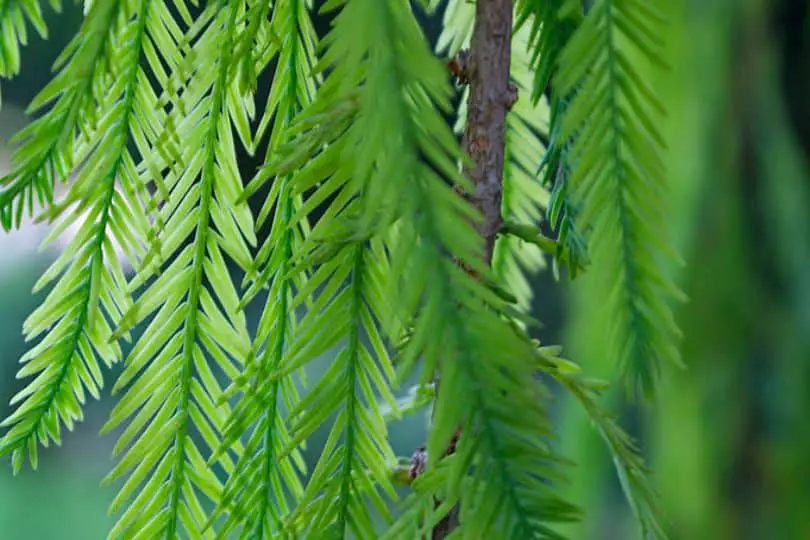
- Scientific Name: Taxodium distichum var. mexicanum
- Common Name(s): Montezuma Cypress, Ahuehuete
- Mature Height: 60-80 feet (18-24 meters)
- Native Region: Native to Mexico and Central America
- Flowers: Inconspicuous flowers
- Fruit: Cones with small seeds
- Uses: This tree is often planted for its ornamental value, providing shade and an attractive silhouette. It is also used for erosion control along water bodies and as a windbreak.
The Montezuma Cypress, also known as Ahuehuete, is a big cypress-like deciduous conifer tree. It can grow to be 60 to 80 feet tall, with a spread of 20 to 30 feet, creating a commanding presence in the environment. The tree has a narrow, pyramidal shape when young, but as it grows older, it develops a broad, spreading crown.
The Montezuma Cypress has distinguishing characteristics that aid in identification. It has thin, scale-like leaves that are placed spirally around the branches, giving the tree a feathery look. The bark is reddish-brown and fibrous, and as the tree ages, it may peel off in strips. It has a thick taproot system that allows it to withstand flooding and heavy winds.
This cypress tree is endemic to Mexico and Central America, where it can be found near rivers, lakes, and other wetlands. The Montezuma Cypress is predominantly grown in Georgia for its decorative appeal in landscapes. It grows in full sun to moderate shade and is ideal for planting near ponds, lakes, or damp places.
The Montezuma Cypress has little, inconspicuous blossoms that are not particularly attractive. Its fruit is made up of tiny, woody cones containing small winged seeds. The cones remain on the tree all year, adding aesthetic interest.
In terms of growing conditions, the Montezuma Cypress favors moist, well-drained soils but can also withstand occasional flooding. Once developed, it is relatively drought tolerant. This tree can grow in a variety of soil types, including clay and sandy soils.
The Montezuma Cypress is widely planted in Georgia settings for its aesthetic appeal. It provides shade, making outdoor activities more enjoyable. Its pleasing pyramidal shape and feathery foliage make it an eye-catching addition to any landscape. It is also used to manage erosion near waterways and as a windbreak to protect other plants from severe winds.
Common Cypress Trees In Georgia – Frequently Asked Questions (FAQs)
Let’s go through some of the most commonly asked questions related to common cypress trees in Georgia.
Are there cypress trees in Georgia?
Yes, there are cypress trees in Georgia. Georgia is home to several cypress tree species, including the bald cypress (Taxodium distichum) and the pond cypress (Taxodium ascendens). These trees can be found throughout the state in wetland areas, swamps, and along the banks of rivers and streams.
Cypress trees are known for their distinctive buttressed trunks and ability to thrive in waterlogged soil. They are an essential component of Georgia’s natural ecosystem, contributing to the state’s biodiversity.
Can you grow cypress trees in pots?
Cypress trees can be grown in containers, but they require careful attention to their specific needs to thrive. Because cypress trees have deep root systems, choose a large container with good drainage. As cypresses prefer slightly acidic conditions, make sure the potting soil is well-draining and acidic. Regular watering is required to keep the soil moist but not waterlogged.
Cypress trees, depending on the species, may require a lot of sunlight, so place the pot in a sunny location. Pruning may be required to control their growth in a small space. While cypress trees can be grown in pots, they are best suited for planting in larger outdoor spaces where they can reach their full potential.
What are the common uses of cypress trees in Georgia?
Because of their unique characteristics and wood properties, cypress trees in Georgia have a variety of everyday uses. One of the primary applications is in the production of lumber and timber. Cypress tree wood is highly durable, decay-resistant, and known for its attractive grain patterns, making it ideal for construction, siding, and outdoor applications such as decking and fencing.
Furthermore, cypress trees are valued for their ecological benefits in riparian and wetland ecosystems, where they help stabilize soil, prevent erosion, and provide wildlife habitat. They are also used in ornamental landscaping to improve the appearance of parks, gardens, and residential properties.
Similar Articles
- Native Oak Trees in Georgia
- Native Pine Trees In Georgia
- Native Hickory Trees In Georgia
- Native Maple Trees In Georgia
- Native Tupelo Trees In Georgia
- Native Plum Trees In Georgia
- Native Magnolia Trees In Georgia
- Native Willow Trees In Georgia
- Native Ash Trees In Georgia
- Native Elm Trees In Georgia
- Native Dogwood Trees In Georgia
- Native Cottonwood Trees In Georgia
- Native Cedar Trees In Georgia
- Common Birch Trees In Georgia
- Common Purple Trees In Georgia
- Common Palm Trees In Georgia
- Common White Flowering Trees In Georgia
Sources
The Regional Gardening team makes sure that the information in our articles is accurate by only using sources that are known to be trustworthy. Some of these sources are peer-reviewed journals from government agencies, well-known universities, and scientific research organizations.
- Georgia Native Plant Society
- College Of Agricultural & Environmental Sciences, University Of Georgia
- Native Plants Books, Georgia Native Plant Society
- Georgia Forestry Commission
- Native Plants Of North Georgia, University Of Georgia
- Tree Care, Georgia Tree Council


